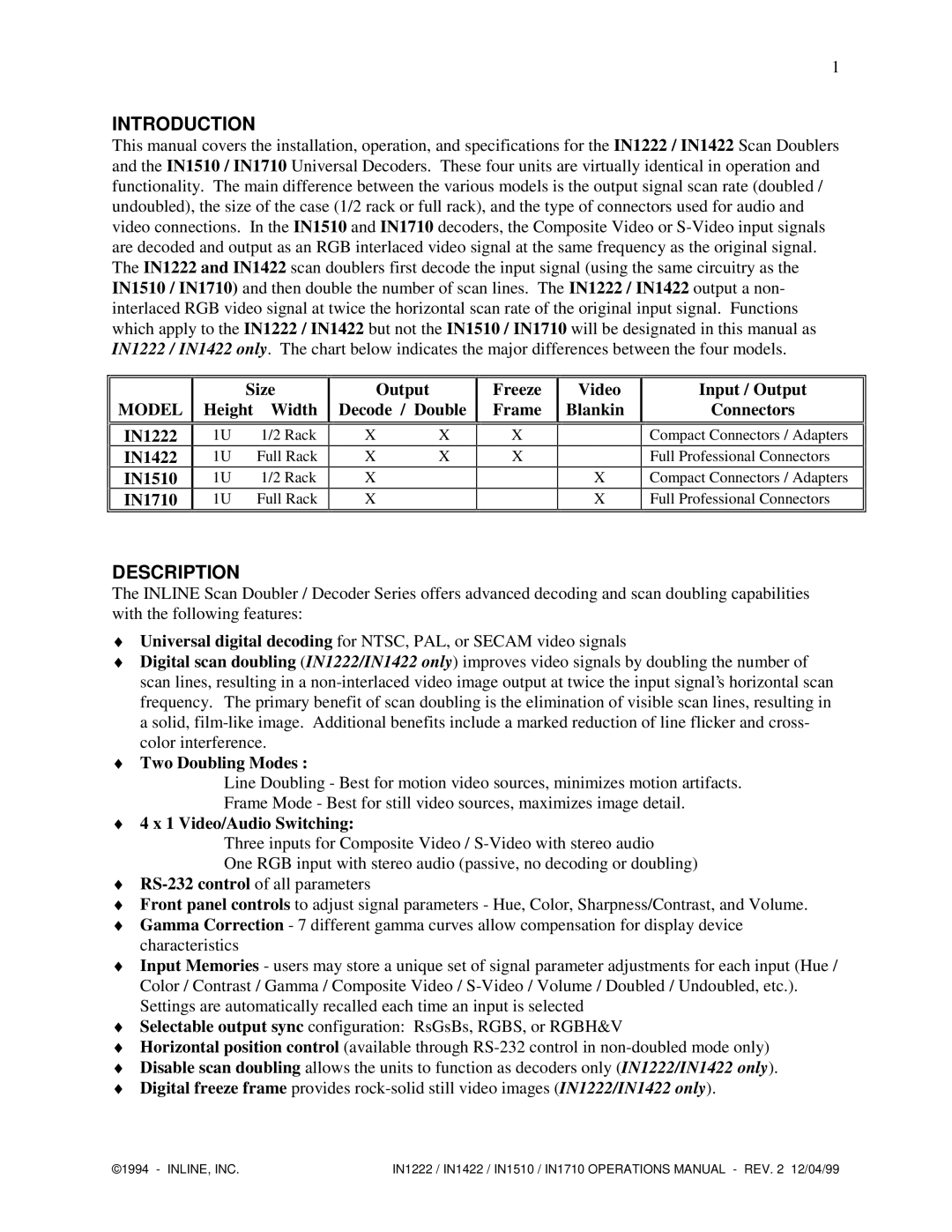
1
INTRODUCTION
This manual covers the installation, operation, and specifications for the IN1222 / IN1422 Scan Doublers and the IN1510 / IN1710 Universal Decoders. These four units are virtually identical in operation and functionality. The main difference between the various models is the output signal scan rate (doubled / undoubled), the size of the case (1/2 rack or full rack), and the type of connectors used for audio and video connections. In the IN1510 and IN1710 decoders, the Composite Video or
MODEL
IN1222
IN1422
IN1510
IN1710
Size
Height Width
1U 1/2 Rack
1U Full Rack
1U 1/2 Rack
1U Full Rack
Output
Decode / Double
XX
XX
X X
Freeze Frame
X
X
Video
Blankin
X
X
Input / Output
Connectors
Compact Connectors / Adapters
Full Professional Connectors
Compact Connectors / Adapters
Full Professional Connectors
DESCRIPTION
The INLINE Scan Doubler / Decoder Series offers advanced decoding and scan doubling capabilities with the following features:
♦Universal digital decoding for NTSC, PAL, or SECAM video signals
♦Digital scan doubling (IN1222/IN1422 only) improves video signals by doubling the number of scan lines, resulting in a
♦Two Doubling Modes :
Line Doubling - Best for motion video sources, minimizes motion artifacts.
Frame Mode - Best for still video sources, maximizes image detail.
♦4 x 1 Video/Audio Switching:
Three inputs for Composite Video /
One RGB input with stereo audio (passive, no decoding or doubling)
♦
♦Front panel controls to adjust signal parameters - Hue, Color, Sharpness/Contrast, and Volume.
♦Gamma Correction - 7 different gamma curves allow compensation for display device characteristics
♦Input Memories - users may store a unique set of signal parameter adjustments for each input (Hue / Color / Contrast / Gamma / Composite Video /
♦Selectable output sync configuration: RsGsBs, RGBS, or RGBH&V
♦Horizontal position control (available through
♦Disable scan doubling allows the units to function as decoders only (IN1222/IN1422 only).
♦Digital freeze frame provides
©1994 - INLINE, INC. | IN1222 / IN1422 / IN1510 / IN1710 OPERATIONS MANUAL - REV. 2 12/04/99 |
